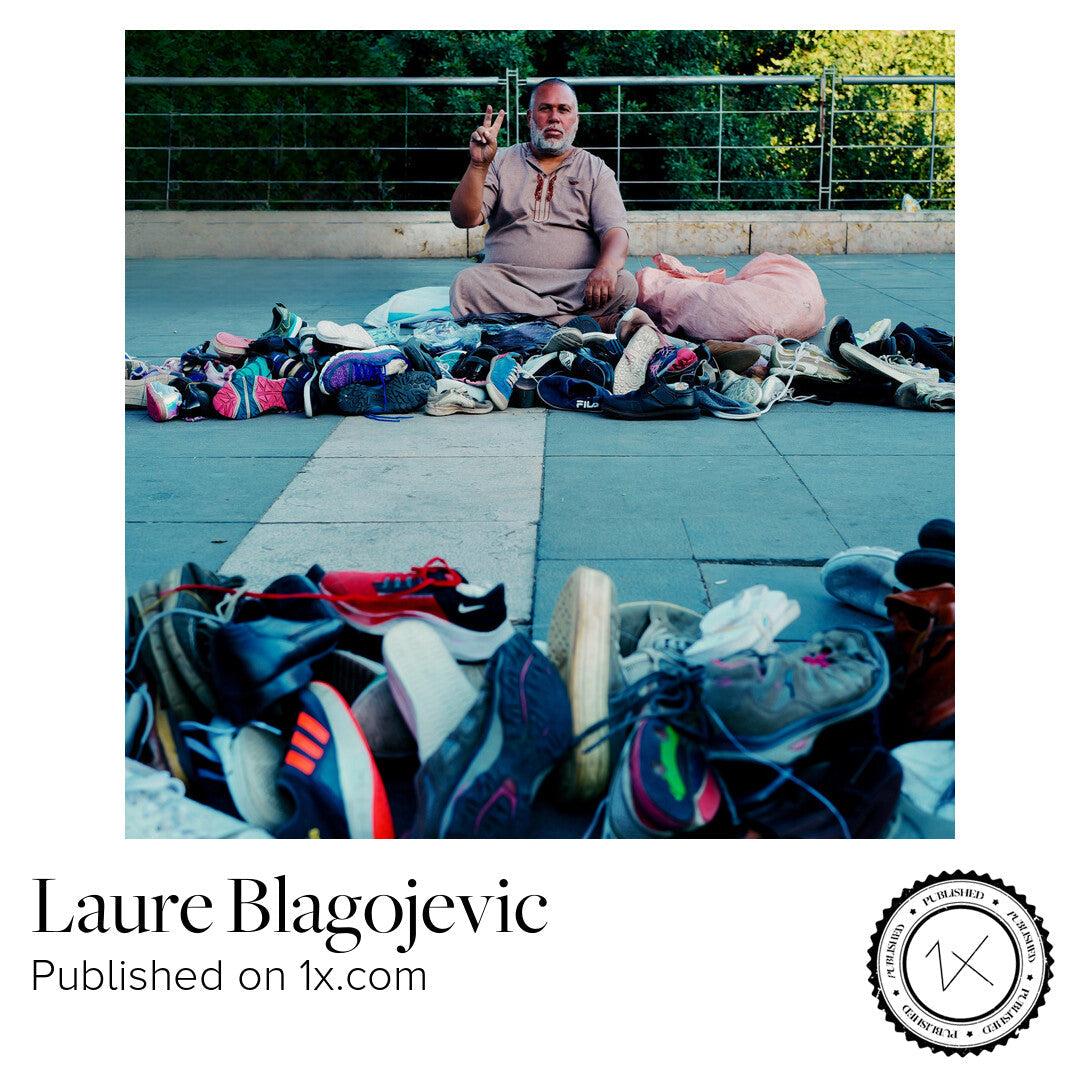
Jordan, a welcoming land
Share
In the heart of Amman, a man sits cross-legged on the ground. Before him, dozens of worn shoes form a carpet of open soles, loose laces, and faded marks. The man looks straight into the camera. He raises two fingers. A gesture of peace, resistance, or skill? It doesn't matter: he's there, anchored, with what's left.
Jordan is a land of passage and welcome. For decades, it has hosted populations displaced by neighboring conflicts: Palestine, Iraq, Syria, Lebanon. This territory bears the imprint of successive exiles. Here, a pair of shoes is never just an object. It becomes the silent tracer of a displacement, a survival, a crossing .
Miles of history, in a pair of soles
This photograph, selected by 1X.com , captures a frontal scene of an informal market. Nothing aesthetic: a direct gaze, a raw framing, a silent tension. It is not a constructed scene but a captured moment—between presence and erasure.
Man does not just sell objects. He manages a circulating memory , made up of kilometers traveled, roads crossed, names lost. Here, shoes become compressed stories , carried by other bodies, in other streets, sometimes other countries. The act of resale is not marginal: it reinscribes traces in the economy, in the visible, in the present.
A circular economy as a form of dignity
In Amman's informal economy, second-hand markets play a vital role. They allow exiles, migrant workers, and precarious residents to repurpose what has been worn out elsewhere . They reintroduce into the circuit objects that already carry a story.
The shoe here embodies a symbol of anchoring and passage , of those who walk, flee, resist. An image of everyday life, but which encapsulates—without pathos—what Jordan represents for so many people: a shelter, a stopping point, a place of reconstruction.

